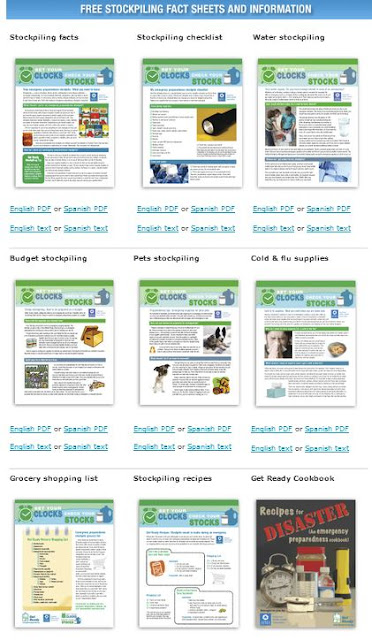 |
| Credit APHA |
#12,304
Each year in the U.S. most of the country switches to Daylight Savings Time (DST) in the Spring, and back to Standard Time in the Fall. Tonight (well, 2am tomorrow morning to be precise), we `spring forward’ into DST, which is used as a handy reminder by FEMA , READY.GOV, the APHA and others for the public to the check batteries in smoke alarms, and to check their emergency supplies.
I use this twice-a-year time change as a reminder to go through and check my stash of emergency food storage, discarding any foods that are seriously out of date, and rotating those `on the cusp' to my pantry to be used in the next few months.
As most preppers already know, most shelf stable food - if properly stored - will last long beyond its `expiration' or `best if used by' date. The USDA issued new guidance last December (see Food Product Dating) on precisely this topic, writing:
Safety After Date Passes
With an exception of infant formula (described below), if the date passes during home storage, a product should still be safe and wholesome if handled properly until the time spoilage is evident (Chill Refrigerate Promptly). Spoiled foods will develop an off odor, flavor or texture due to naturally occurring spoilage bacteria. If a food has developed such spoilage characteristics, it should not be eaten.(Continue . . .)
It's a relatively small task for me since I live alone. I keep a couple of weeks worth of emergency food on hand (mostly heat and eat tinned food). Those with bigger households may wish to set up some kind of FIFO inventory system. There are apps available for precisely this chore.
I also use this time to refresh my water supplies (I keep a minimum of 30 gals). Since I have a water filter, and live in an area with plenty of lakes and abundant rain 9 months out of the year, I don't feel the need to store huge quantities.
In addition to checking my smoke alarms, CO detector, and fire extinguishers, I also check my OTC medical supplies for anything that needs replacing. For a look at my `home flu box', you may wish to revisit Home Alone . . . With The Flu.
For some quick and easy advice on how to stock up and prepare, the American Public Health Association has a set of free guides available at http://www.getreadyforflu.org/clocksstocks/index.htm.
Agencies like FEMA, READY.GOV and the HHS are constantly trying to get the preparedness message out, so that when (not `if') a disaster does occur, human losses can be minimized. At a bare minimum, every household should have a disaster plan, a good first aid kit (and the knowledge to use it), and emergency supplies to last a minimum of 72 hours during a disaster.
For more information on how to prepare for emergencies, up to and including a pandemic, the following sites should be of assistance.
FEMA http://www.fema.gov/index.shtm
READY.GOV http://www.ready.gov/
AMERICAN RED CROSS http://www.redcross.org/
APHA Get Ready : http://getreadyforflu.org/newsite.htm
A few of my (many) blogs on this subject include:
While it takes more than a few minutes to become prepared, once you’ve laid that foundation, a few minutes twice-a-year may be all it takes to maintain it.
In An Emergency, Who Has Your Back? When 72 Hours Isn’t Enough When Evacuation Is The Better Part Of Valor
